
Yoshida
A hand-painted replica of Andō Hiroshige’s masterpiece Yoshida, meticulously crafted by professional artists to capture the true essence of the original. Each piece is created with museum-quality canvas and rare mineral pigments, carefully painted by experienced artists with delicate brushstrokes and rich, layered colors to perfectly recreate the texture of the original artwork. Unlike machine-printed reproductions, this hand-painted version brings the painting to life, infused with the artist’s emotions and skill in every stroke. Whether for personal collection or home decoration, it instantly elevates the artistic atmosphere of any space.
Andō Hiroshige, a renowned Japanese ukiyo-e artist of the Edo period, is celebrated for his landscape prints and series that capture the essence of Japan's natural beauty and cultural landmarks. One of his notable works is the print "Yoshida," which is part of his acclaimed series "The Fifty-three Stations of the Tōkaidō." This series, created between 1833 and 1834, depicts the various post stations along the Tōkaidō road, a vital route connecting Edo (modern-day Tokyo) to Kyoto.
The "Yoshida" print specifically represents the Yoshida-juku, the 34th station on the Tōkaidō. This station was located in present-day Toyohashi, Aichi Prefecture. The Tōkaidō was the most important of the Five Routes of the Edo period, facilitating travel and trade between the shogunate capital and the imperial city. Hiroshige's series captures the diverse landscapes, daily life, and cultural practices encountered along this journey.
In the "Yoshida" print, Hiroshige illustrates the Yoshida Castle, a prominent feature of the area, along with the Toyokawa River. The composition typically includes travelers crossing the river, either by bridge or ferry, and the castle in the background, showcasing Hiroshige's skill in blending human activity with natural and architectural elements. His use of perspective and color creates a sense of depth and atmosphere, drawing viewers into the serene yet dynamic scene.
Hiroshige's work is characterized by its attention to detail and ability to convey the transient beauty of nature, a concept deeply rooted in Japanese aesthetics. His prints often include seasonal references, such as cherry blossoms or autumn leaves, which add layers of meaning and evoke the passage of time. In the "Yoshida" print, the depiction of the river and the surrounding landscape reflects the changing seasons and the harmony between human life and nature.
The "Fifty-three Stations of the Tōkaidō" series was immensely popular during Hiroshige's lifetime and remains influential in the art world today. It not only provides a visual record of the Tōkaidō road and its stations but also offers insight into the culture and society of Edo-period Japan. Hiroshige's innovative compositions and masterful use of color and line have inspired countless artists, both in Japan and internationally.
Hiroshige's work, including the "Yoshida" print, played a significant role in the development of landscape art and the ukiyo-e genre. His ability to capture the spirit of a place and moment in time has left a lasting legacy, influencing Western artists such as Vincent van Gogh and Claude Monet, who admired and collected Japanese prints.
In summary, Andō Hiroshige's "Yoshida" print is a testament to his artistic genius and his ability to convey the beauty and cultural significance of Japan's landscapes. Through his work, Hiroshige invites viewers to embark on a journey along the Tōkaidō, experiencing the sights and sensations of a bygone era.





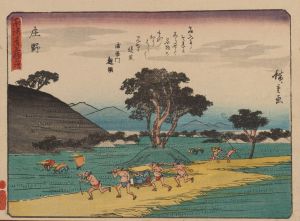
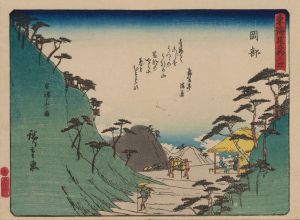
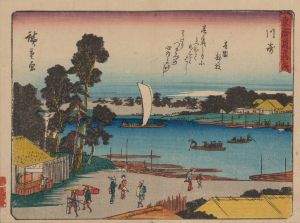

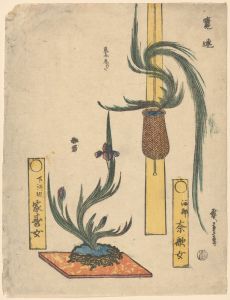
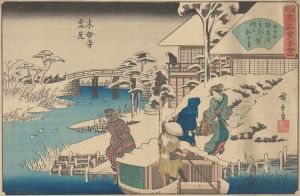
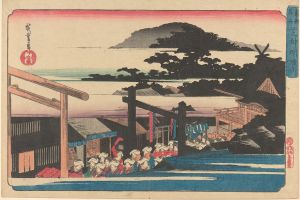

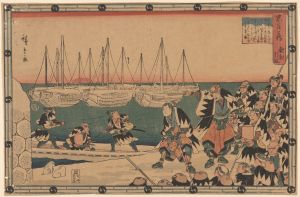

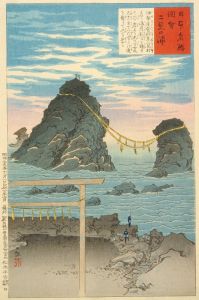

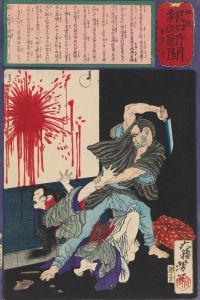
![Musha]taira no tomomori](/imgs/225657/s/tsukioka-yoshitoshi-mushataira-no-tomomori-bb591b96.jpg)